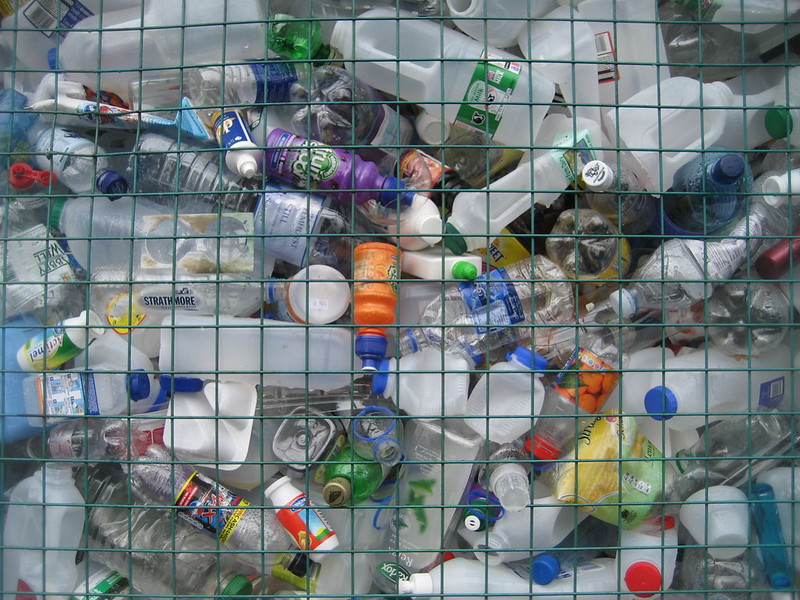Industry makes 380 million tons of plastic every year and none of it is truly recyclable.
Greenpeace has just released a report in October calling out the plastic industry for greenwashing the status of plastic recycling by continuing to employ the familiar “chasing arrows” recycling symbol on their products, when the truth is that recycling plastic has been a near-complete failure.
While some of us have nearly eliminated plastic shopping bags and single-use plastic water bottles from our lives, many have not. And there is a long list of other common plastic products we use and discard every day – most having a relatively short lifetime, like soft drink bottles, food containers, plastic cups and tableware, milk jugs, detergent, and shampoo bottles, to name a few.
All the properties that make plastic such a great material for so many uses – lightweight, strong, indestructible and waterproof – are precisely the same properties that make it an increasing concern for the oceans and our beaches. It sticks around for a long time.
A walk on the beach anywhere on the planet will sadly bear this out. Because plastic floats and travels everywhere, coastlines from Alaska to Antarctica, Mauritius to Mexico, and Taiwan to Tahiti, have their own collection of plastic debris which may have traveled a few feet, or a few thousand miles from its original disposal site.
And we have now discovered that most of this is coming into the oceans from rivers.
As the new Greenpeace report points out, however, no plastic is truly recyclable, not even the water bottles and milk jugs that conscientious people usually toss into those blue recycling bins. No plastic product meets a common industry standard for recyclability, even though they carry the familiar “chasing arrows” recycling symbol. Industry-backed recycling labels on a wide variety of food and drink containers as well as other products perpetuate a myth that we can somehow scale up to handle the roughly 380 million tons of plastic that the industry pumps out annually. This is over a million tons every day, 365 days a year!
The rate of recycling in the U.S. has never been greater than 10% and earlier this year a report indicated that this has fallen to just 5%. There are many reasons for this very low percentage. Plastics share a number of similarities: they are difficult to collect and sort, they release hazardous chemicals during the recycling process, they are frequently so contaminated with toxic chemicals that they must be “down-cycled” into lower-value products, then sent to a landfill, or incinerated, releasing a number of harmful constituents into the atmosphere. Recycling is not economical and it’s cheaper for the plastic industry to just buy new plastic.
Instead of putting all of our efforts into recycling or trying to clean up the plastic in the ocean (which is an impossible task because of the scale of the problem), we need to instead focus our energy on reducing or eliminating plastic packaging altogether (or by replacing it with reusable materials).
“Corporations are hiding behind plastics recycling and hoping that it will completely solve the plastic waste crisis that they have helped to create”. The Greenpeace report makes it clear that “Plastics recycling is absolutely not the solution” to the plastic pollution crisis. They recommend that companies remove the recycling symbol from plastic products since most of them are never recycled. The “chasing arrows” are deceptive to consumers who assume that the packaging they are purchasing can be recycled, when the truth is that it can’t be and it isn’t.









